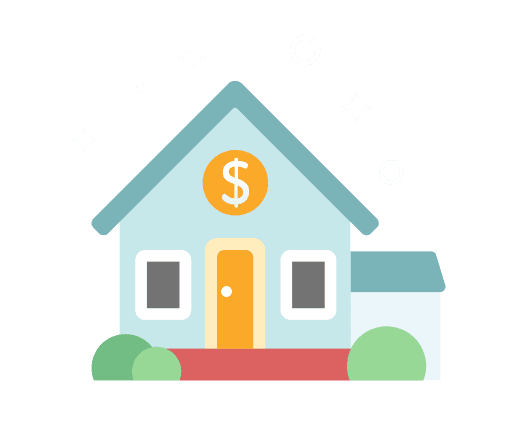Knowing how to get pre-approved for a mortgage is like having a cheat code for streamlining the homebuying process. When you’re pre-approved, you can determine how much you can likely afford and what your monthly mortgage payment might look like. You may even be able to lock in a more affordable interest rate before you’ve even found your dream home. Plus, a mortgage pre-approval can make it a breeze to complete your application once you’ve chosen a home to buy, because you’ve already begun the process and gathered the necessary documentation.
Here’s everything you need to know about how to get a mortgage pre-approval:
What is a mortgage pre-approval and why is it important?
When you’re ready to buy a house, the first thing you do shouldn’t be browsing homes — it should be getting your mortgage pre-approval. A mortgage pre-approval is a tentative offer to loan you money for a home. It shows you how much you can expect to borrow, and at what terms. This will help you decide your budget and help you target a price range for homes. It also gives you extra power when you do start browsing homes because a mortgage pre-approval shows sellers you can likely afford the offer you’re making.
Finally, getting a mortgage pre-approval now will help speed up the mortgage application process later, because the lender will already have a lot of the information it needs to process your application.
Mortgage pre-approval vs. prequalification
A mortgage pre-approval is different from a mortgage prequalification. Prequalification is a tentative estimate of your borrowing power, based only on the information you provide the lender. A pre-approval is much more definitive because the lender pulls your credit history to verify the information you’ve provided.
Homebuyers who are just beginning their journey can start with a mortgage prequalification to get a rough idea of what they could qualify for and which loan options might be a good fit.
But if you’re almost ready to commit to a home and a mortgage, a pre-approval is the way to go.
How to apply for a mortgage
Applying for a mortgage pre-approval is very similar to applying for a mortgage. You’ll need to provide your financial information, personal details, and some documentation that the lender will use to verify your income, identity, assets, and debts.
- Check your credit: First, check your credit report to make sure it’s accurate and to spot any potential obstacles. You can go online to get free credit reports from the top three credit bureaus.
- Pay your debts: Now is not the time to miss a loan or credit card payment. If you can, try to pay more than the minimum payment each month; decreasing your debts can make it easier to get approved for a mortgage.
- Start (or stick to) your budget: A solid, realistic budget will help you determine how much you can afford to pay each month for your mortgage, plus keep you on track saving up for a down payment.
- Shop for lenders: Comparison shopping is the best way to find a good deal on a mortgage. Check out several different lenders to see what types of loans they offer, as well as annual percentage rates, loan terms, and requirements.
- Gather your paperwork: Gather all the pre-approval documents you’ll need, so you’re ready when you begin the application. This includes your most recent pay stubs, bank statements, tax returns, driver’s license, and Social Security number.
- Fill out the application: Once you’ve chosen a lender, fill out the mortgage pre-approval application and upload the required documents. You may have to answer some questions about your finances or provide additional documentation, depending on the lender and your situation. At this point, the lender will conduct a hard credit inquiry, which may temporarily lower your score by a few points.
- Wait for a response: Once your lender has reviewed and made a decision on your application, they’ll notify you and send you a letter. If you are preapproved, that means you’re one step closer to purchasing your home. You can show this letter to sellers when it’s time to make an offer. If you are denied, you should contact your lender to find out why you were denied and if you still qualify for other types of loans.
What happens after you apply
After you’ve submitted your application, you might worry about whether it’s taking too long, or whether you’ve made a mistake. Be patient: it can take time for the lender to fully vet your application and make its decision.
How long does it take to get pre-approved?
“A good mortgage professional should be able to review your file and provide a pre-approval on the same day,” said Sarah Alvarez, vice president of mortgage banking at William Raveis Mortgage.
“Of course, there are exceptions when certain aspects of the borrower profile are more complicated,” she said.
In some cases, it can take up to a week or more to get pre-approved for a mortgage. The lender needs time to go through your application, pull your credit report, and verify your documents. Having all required documents on hand may help speed the process up.
How long does a pre-approval stay active?
A pre-approval letter doesn’t stay active forever — usually, they’re good for 30, 60, or 90 days. That might be plenty of time for you to purchase a home. But if it’s taking you longer than expected to find your dream home, don’t panic. You can typically request a renewal from your lender, who may ask you to provide updated financial details to make sure they’ll still pre-approve you.
Factors that determine a home loan pre-approval
Lenders consider quite a variety of factors when deciding whether to issue you a mortgage pre-approval letter, so you should make sure your finances are in order. Some of the factors they’ll evaluate include:
- Credit score: Lenders will want to see your credit history and credit score to determine how likely you are to repay the loan. If you make all of your payments on time and stay consistent with your accounts, it can improve your credit score.
- Debt-to-income ratio (DTI): Lenders also want to know how much debt you already have, especially as it compares to the income you bring in each month. If your DTI is very high, the lender may be concerned you won’t have enough money left to make your mortgage payments. The sweet spot is a DTI of no more than 35% to 50%.
- Employment history: Are you a job-hopper or frequently unemployed? Lenders want to know that you’ll keep bringing in a steady paycheck, which is why they check your employment history, typically for the last two years.
- Income: How much you earn (and how much you have saved) will influence your lender’s decision, too. They want to make sure you can afford the loan you’re requesting, and that you have enough for the down payment, too.
What to do after you hear back from the lender
You should hear back from the lender within 10 days — sometimes much faster — with an answer to your application.
If you are pre-approved: Check how much you are pre-approved to borrow. If it’s close to what you expected, you can prepare your homebuying budget and reach out to your real estate agent. If your pre-approval came back lower than you’d hoped, reach out to your lender to ask why. You might be able to make some changes to your situation and try again, or it might be time to reset your expectations as to what you can truly afford.
If you are not pre-approved: If your credit isn’t where you’d like it to be, or you’re experiencing other obstacles to getting pre-approved, don’t get discouraged. Ask your lender the reason for the decision; it could be something easily fixed, such as a mistake on your credit report that’s dragging down your credit score. You can also reach out to a counselor from the U.S. Department of Housing and Urban Development, who can show you how to improve your score and boost your chances of getting pre-approved.
Mortgage preapproval FAQs
How far in advance should I get pre-approved for a mortgage?
“This should always really be the first step in the homebuying process if you plan to get financing,” Alvarez said. “I know many real estate agents who will not take someone out to view properties until they have their pre-approval in place.”
Try to time your pre-approval application so that you receive your pre-approval letter shortly before you’re ready to begin touring potential homes.
Is it hard to get pre-approved for a mortgage?
Getting pre-approved for a mortgage can be easy if you’re well-prepared. Have you been working on paying down your debts, improving your credit score, and staying consistent at work? Those factors can boost your chances. Alvarez also recommends meeting with a mortgage professional to be sure you provide the correct information, because missteps can slow down the process considerably.
Does a mortgage pre-approval impact my credit?
Yes, a mortgage pre-approval may impact your credit score when the lender does a “hard pull” on your credit report. This kind of credit inquiry has a limited effect, though — usually it will drop your score by perhaps five points or so, and only temporarily.
Plus, if you’re rate-shopping with many lenders within a short time period, like a month, it typically only counts as one “inquiry.”
Do I need to get a mortgage pre-approval?
You are allowed to buy a house without a mortgage pre-approval, of course. However, skipping this step could make it harder to convince a seller to accept your offer, making it even tougher to land a home, especially in competitive markets.
How long does it take to go from pre-approval to closing?
Typically, you can get from mortgage pre-approval to closing on your home loan in four to six weeks, although it depends on the property and location.
“I would say the typical loan takes between 30-60 days, with many falling somewhere in the middle,” Alvarez said.


